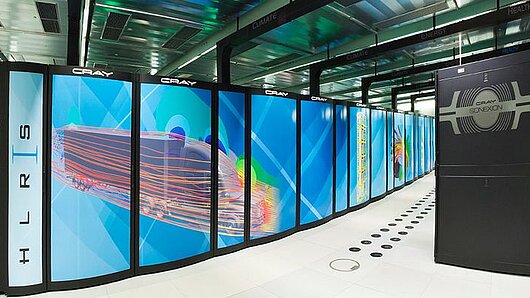High-Performance Computing Center Stuttgart

In the Top500 list which ranks the world's fastest supercomputers based on their performance measured by the Linpack benchmark, Hazel Hen also made it into the Top-10. The HLRS HPC system is listed as the 8th fastest supercomputer in the world with its Rmax performance of 5.64 Petaflops (5.64 quadrillion floating point operations per second).
The HPCG benchmark has recently enjoyed growing attention in the HPC community as it tries to reflect changed customer requirements. It has been developed to provide a benchmark for performance of the fastest supercomputers measured in real applications. While the Linpack benchmark, which serves as metrics for the well known TOP500, measures the speed and efficiency of full matrix linear equation calculations of a system, the HPCG benchmark does not focus on raw CPU performance but stresses the system balance, e. g. floating point operations versus bandwidth and latency of the memory system and the communication network. In addition, it tightens the focus on messaging, memory, and parallelization. All these parameters add up to an “averaged” yet from the users’ perspective more beneficial and thus more important system performance.
“Being listed in the top-10 of the TOP500 is an honor for us. However, our focus at HLRS has always been on user performance. Everything else comes second,” stresses Prof. Michael M. Resch, Director of the HLRS. “As a consequence, we are all the more delighted to take the lead in Europe for this realistic application benchmark. This is the result of the work of many people at HLRS, and we would like to thank all colleagues from Cray and from the University of Stuttgart as well as the state of Baden-Württemberg and the Federal Government of Germany for their continued and ongoing support. Today, we have shown that our focus on the users pays off.”